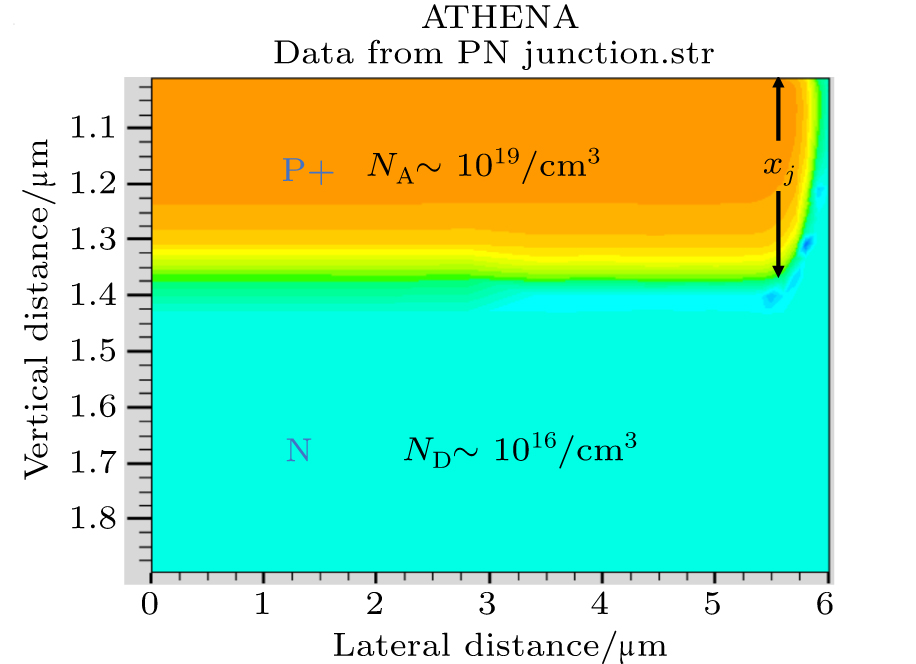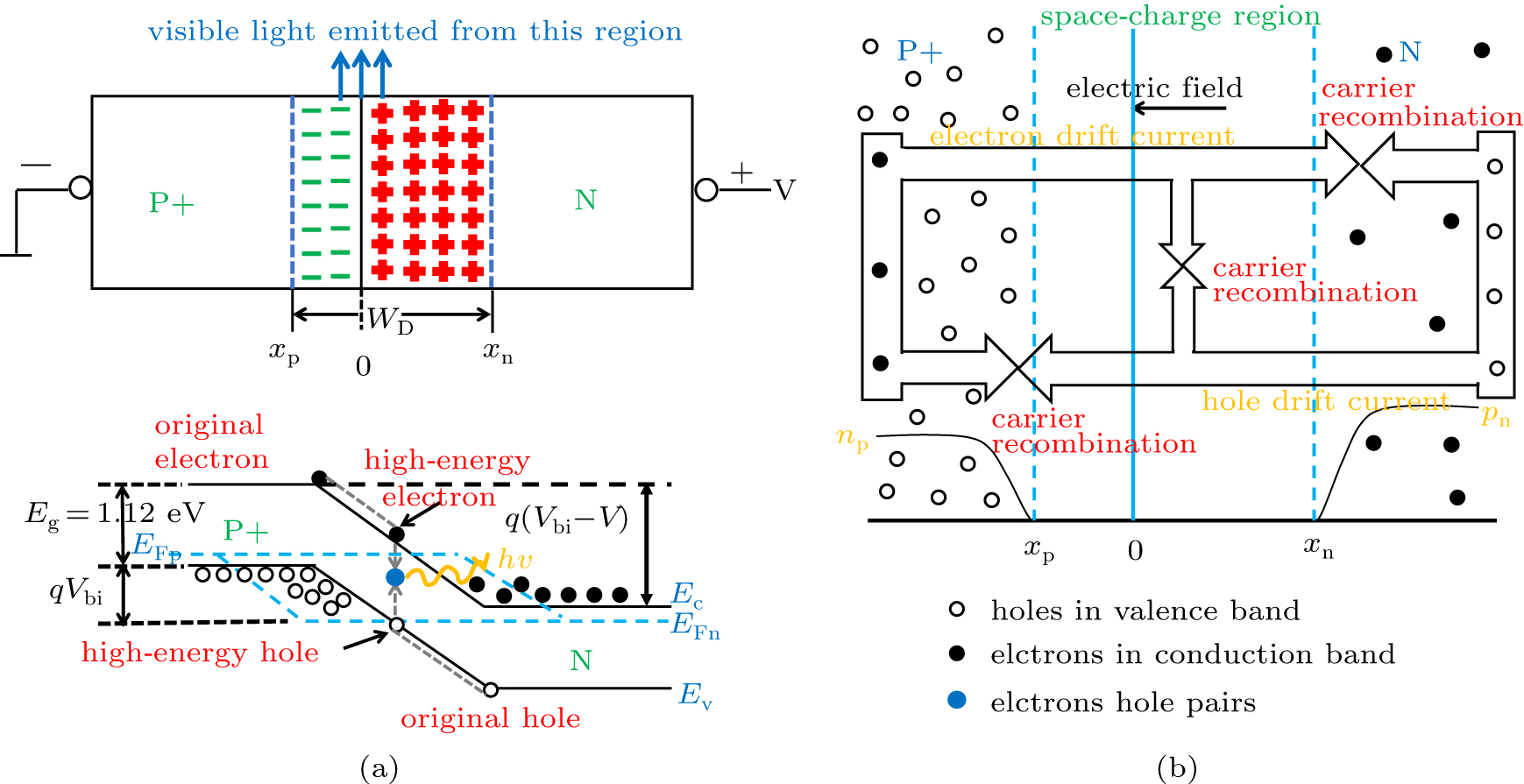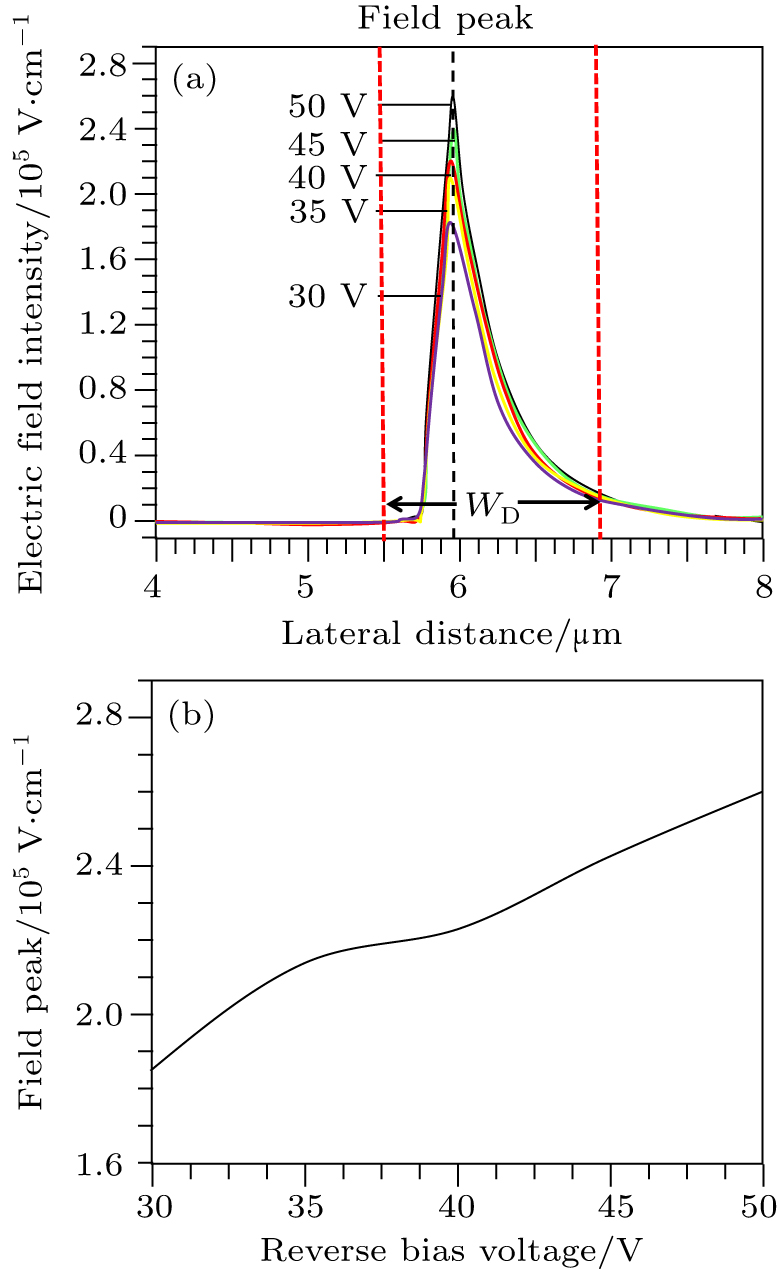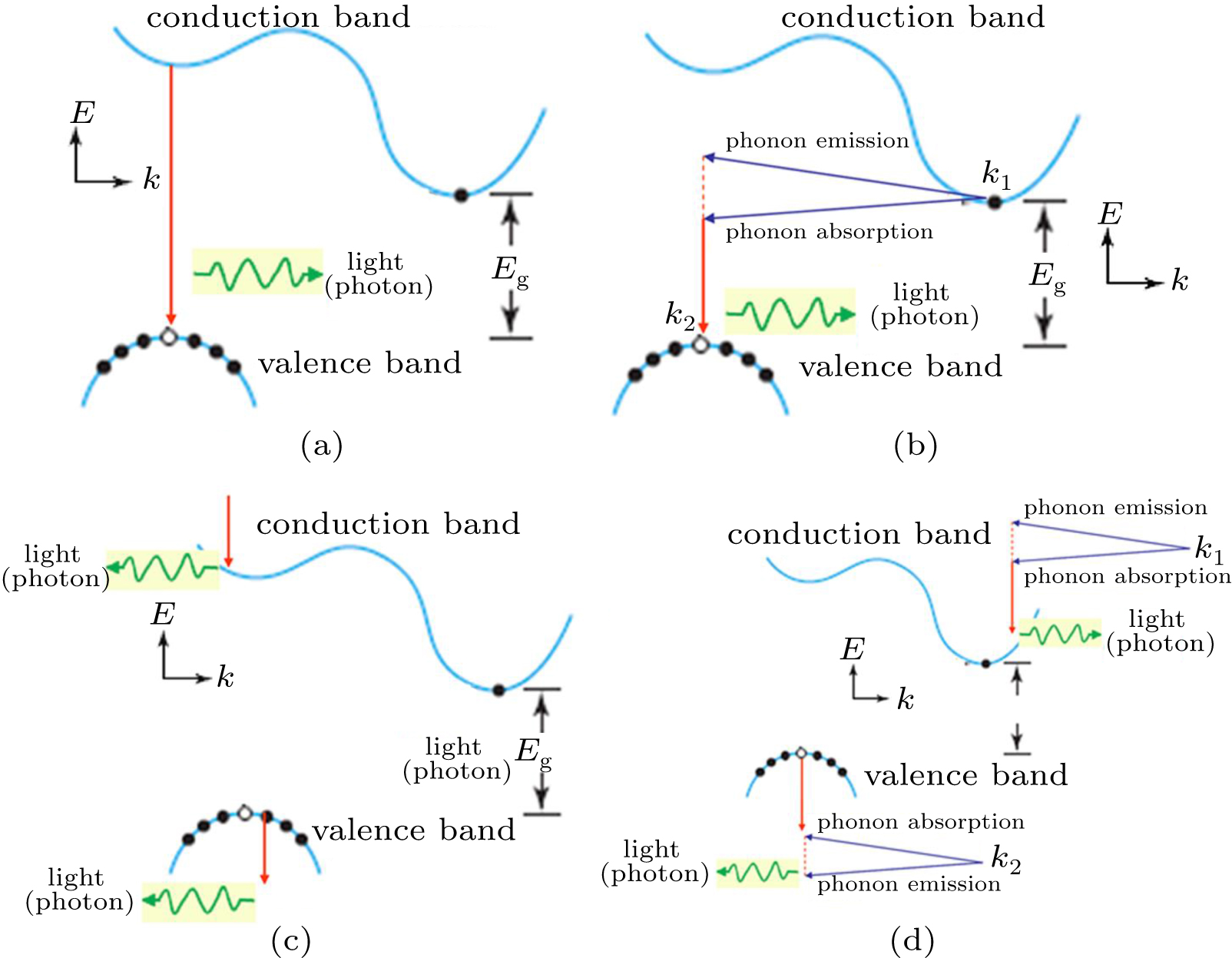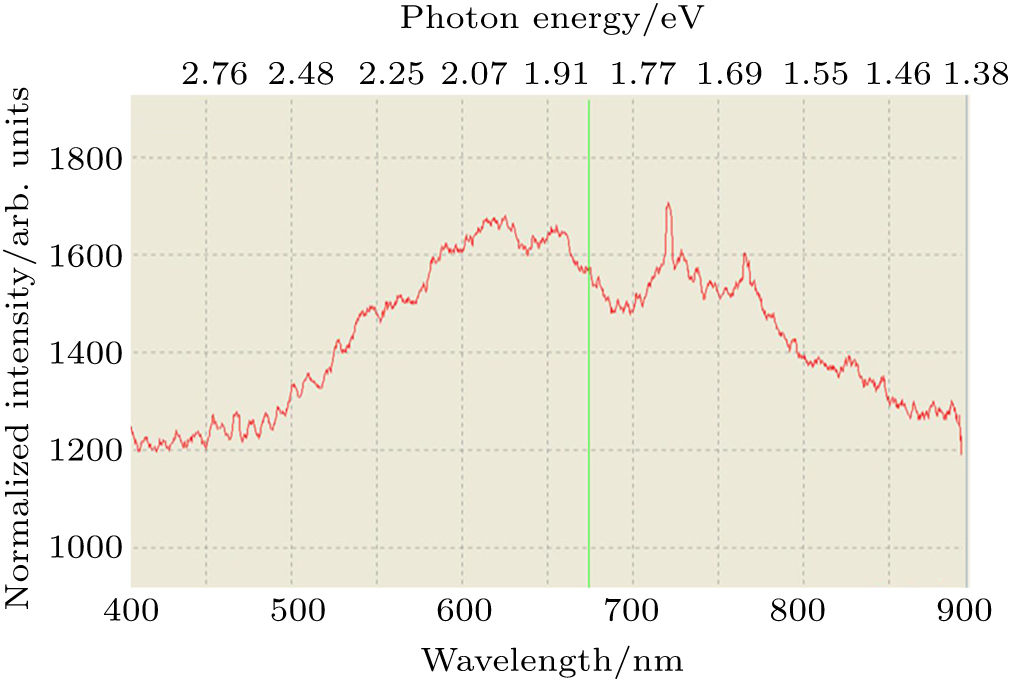† Corresponding author. E-mail:
Si 
Silicon-based optoelectronic integration technology as the cornerstone of future information technology has great potential in optoelectronic applications. However, this technology faces a bottleneck of lacking suitable silicon-based light source due to the silicon’s indirect bandgap. To overcome this bottleneck, many silicon substrate light source schemes have been proposed.
In order to transform the indirect bandgap of silicon into direct bandgap, ultrathin SixGey strained layer super-lattices were proposed to fold the Brillouin zone.[1] Although new optical properties in terms of Si-based optical devices were developed, it is difficult to obtain a relatively low epitaxial dislocation density. The lifetime of phosphorescent organic light-emitting diodes (OLED) is usually poor due to the trap formed by triplet-polaron annihilation. The exciton distribution can be broadened and the exciton concentration can be reduced by using ultrathin light emitting layers (

Light emission from silicon devices has been realized in reverse-biased p–n avalanche structures.[12] High speed is required in optical interconnects, and GHz modulation bandwidth will limit the applications of this technology.[13] The purpose of this paper is to present our efforts on searching for the high speed of a silicon p–n junction switching of light emission.
In this study, the avalanche impact ionization process is presented to evaluate the emitted photons. The operational speed of avalanche breakdown mode is determined by the RC time constant of the device, as well as the carrier transit time through the depletion region.[12] Our study suggests that the device working under avalanche breakdown mode has a potential to reach gigabit rates.
The proposed Si optoelectronic device structure is realized on a Si substrate by using typical silicon CMOS process technology. Starting from a 1-



As the reverse bias of the p–n junction increases, electrons and holes are accelerated to attain enough energy in the avalanching region with high electric field. When the reverse bias causes junction breakdown, newly generated electron-hole pairs collide with the lattice and transfer energy to realize light emission. Indeed, both electrons and holes are excited in the related excitation zone in the avalanching junction. Hot electrons may recombine with hot holes in the excitation zone,[14] contributing to photons emitted from the high-field region in the avalanching 
The avalanche breakdown voltage (BV) is numerically calculated using the background doping dependent model given as[15]
 |

Tam and Hu measured the difference between the temperature dependence of the driving current and the temperature dependence of the photon-induced current.[16] The photon energy emitted from the reverse-biased p–n junction can be investigated by a dependence of hot-carrier effects on electron temperature. Accordingly, the photon energy intensity distribution function is given as
 |
As shown in Fig.
The process of filament formation sets an upper limit to the light modulation speed. The filament formation time is typically governed by the transit time of the carriers reaching the depletion edge of the p–n junction. And it is given as
 |


The capacitance in the structure of p–n junction diodes is another way to investigate the transient characteristics of the p–n junction structure-based silicon light source. The capacitance in the structure is defined in Fig.
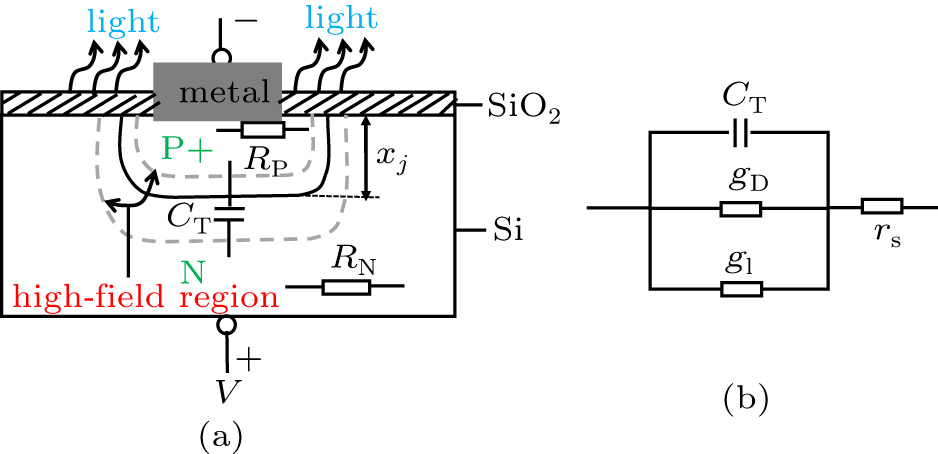 | Fig. 4. Capacitance in a p–n junction diode structure: (a) schematic view; (b) equivalent circuits of a p–n junction capacitor. |
Time is needed to charge and discharge the depletion-layer capacitor. The depletion-layer capacitance CT as shown in Fig. 



Since the cross section’s area of the junction is 



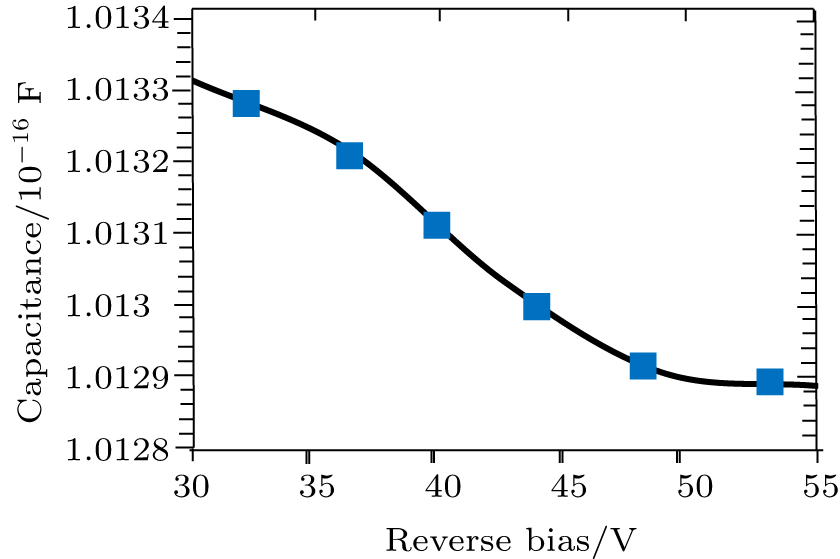 | Fig. 5. Parasitic capacitance–voltage characteristic of the silicon light-emitting device with p–n junction structure. |
The forward-biased operation of p–n junctions for light emission is a slow, inefficient, and unreliable process because of the lifetime of the minority carriers. Any attempt to increase the speed of operation by removing the minority carriers reduces the efficiency of light emission.[18] The dynamic on-resistance of the p–n junction in avalanche is in the tens of kΩ range and the reverse-biased junction capacitance is in the range of pF. Then the RC time constant will be in the range of tens of ps. This will be sufficient to produce modulation in excess of 10 GHz.[22] Both the carrier lifetime depending on the electric field model and the capacitor’s discharging time depending on the RC time constant verify that a combined switching speed in the range of 10 GHz may still attainable for the p–n junction carrier injection light-emitting device in silicon devices.[12]
In avalanche mode, the electron–hole pairs can be accelerated by the electric field as well as gain excess energy. Those pairs could recombine radiatively. Figure
We measured the emission power from the Si 

 |

 |
 |
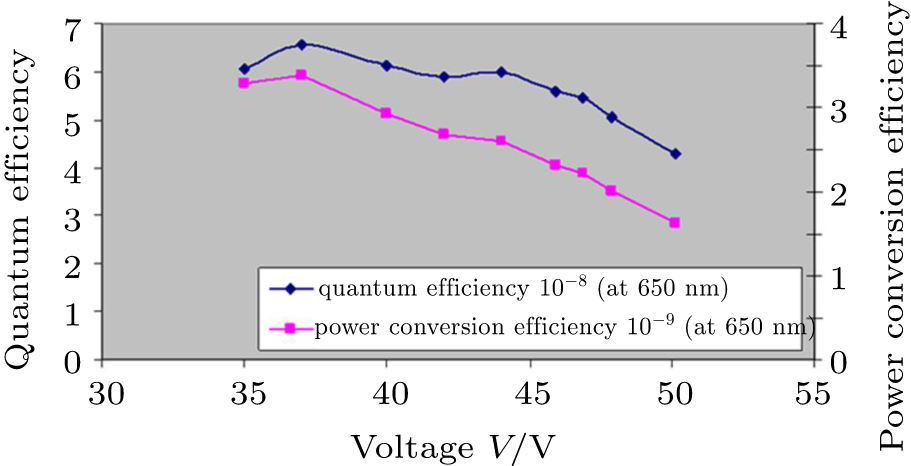 | Fig. 8. Efficiency of Si 


|
Manufacturing these photonic devices is still a challenge. The processing starting with the same silicon wafers in microelectronics has been ubiquitous for decades. Optical components and circuitry onto wafers alongside the microelectronic elements have been introduced using many manufacturing tools in standard semiconductor fabs. However, because photons fundamentally do not obey the same physics as electrons, guiding a photon from one element to another inside a packaged chip is not as simple as soldering the two together. Thus alignment tolerances are much more exacting. Whereas connecting a wire to a contact-pad on a chip involves aligning the components to within a few tens of micrometres of the correct position, connecting an optical fibre to a photonic chip can require three orders of magnitude more precision. Fortunately, thanks to ingenious device engineering and some groundbreaking micro-robotic industrial automation technology, we are well on our way to overcoming these challenges, bringing high-throughput photonic interconnects into the mainstream.
A transient model to establish a relationship of light emission from avalanche breakdown in Si p–n junctions with the applied reverse bias voltage is demonstrated. Theoretical simulations and experimental measurements of the capacitances and series resistances indicate that the device has an intrinsic high-frequency operating capability in the near gigahertz range. The spectral radiance as a function of wavelength is also shown, which reveals clear high intensity peaks at about 625 nm and 725 nm. A compatible CMOS technology light-emitting device is proposed with an optical output of several nW. Hence, some interesting chip-to-chip and on-chip electro-optical applications seem feasible in the next-generation VLSI integrated circuitry.
| 1 | |
| 2 | |
| 3 | |
| 4 | |
| 5 | |
| 6 | |
| 7 | |
| 8 | |
| 9 | |
| 10 | |
| 11 | |
| 12 | |
| 13 | |
| 14 | |
| 15 | |
| 16 | |
| 17 | |
| 18 | |
| 19 | |
| 20 | |
| 21 | |
| 22 | |
| 23 |


